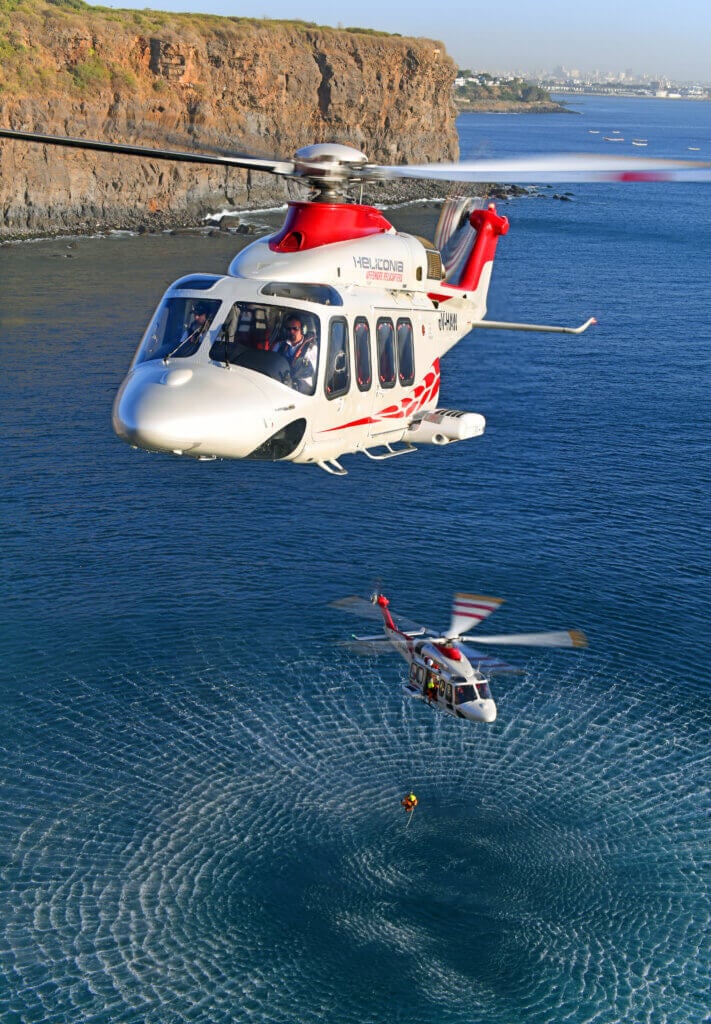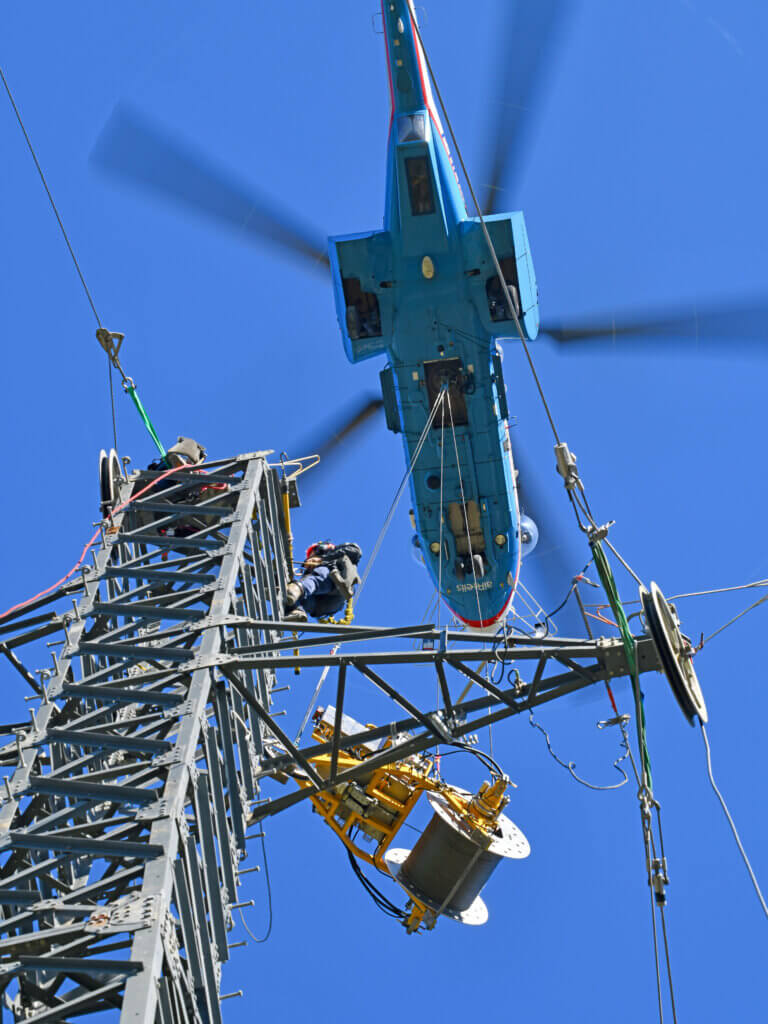The leased among us: Global helicopter leasing market set to soar as demand grows
By: Mark Huber | Retrieved from Vertical Magazine
Rotorcraft leasing is poised to expand in the face of refired offshore energy demand, growing global helicopter EMS, retiring legacy aircraft — and pinched government budgets.
Leased rotorcraft currently represent about 10 percent of the global commercial market, but that figure is expected to grow to 15 percent within the next decade, with a projected compounded annual growth rate of between five to nine percent, depending on which forecast you believe. By 2032, the market could be worth $10 billion — double what it is now.
While offshore energy will continue to account for most of the market, it is no longer the fastest growing one, as helicopter emergency medical services (EMS) continues to surge worldwide. Fully 50 percent of recent lease deals involved EMS helicopters, and the sector is now 15 percent of the overall lease market.
Offshore is still growing, mind you, with energy companies in that sector predicted to invest $250 billion this year. Oil and gas production in the Gulf of Mexico alone is forecast to expand by 25 percent between now and 2027. The worldwide offshore helicopter market could grow by nearly 40 percent by 2033, with the largest share of that expected in the Asia-Pacific region. Offshore wind continues its tertiary contribution to this growth, and could grow to US $1.2 billion by 2030. While direct-to-government leasing, with several notable exceptions, remains largely nascent, leasing to operators who fly government contracts is expanding.
In response to these developments, the big leasing players are aggressively ordering new aircraft. In 2024 and to date in 2025, those deals account for orders and options for 124 medium, super medium, and large helicopters — plus a joint venture between lessor LCI and Japan’s SMFL (Sumitomo Mitsui Finance and Leasing Company, Limited) for $420 million.

The leasing companies are growing in other ways as well. In March, LCI announced its intention to acquire Macquarie Rotorcraft Leasing, a deal that will give it the second-largest fleet of leased out helicopters in the world (an estimated 190), behind the 300-plus of industry leading AerCap’s Milestone Aviation unit. (Once the Macquarie deal closes, LCI will have 310 owned, managed, or on order aircraft.)
LCI CEO Jaspal Jandu said the decision to acquire Macquarie was driven by three factors: substantial long-term demand for new aircraft, supply/demand balance, and an estimate that there has been an undersupply of between 300 to 350 helicopters in the global marketplace since 2018 — a situation compounded by supply chain issues.
Announcing the Macquarie deal in March, Jandu told Vertical, “If you look amongst the leasing companies, traders, and brokers — the market is tight. Essentially, a lot of the equipment is leased — there’s very low frictional unemployment of assets. So, in terms of getting access to equipment in short periods of time, it is quite challenging. So, it really takes a global leasing platform, a full-service leasing platform, to help meet some of those requirements.”
Twins Driving the Demand
Demand for medium and super-medium twins continues to drive the market, as legacy models including older Sikorsky S-76s and Bell 412s are being replaced by newer technology. In 2024, Leonardo delivered 110 of its light twin to super medium twin family (67 AW139s, 30 AW169s, and 13 AW189s), while Airbus delivered 122 (86 H145s, 23 H160s, and 13 H175s).
On the surface, this may be reminiscent of the go-go days of the early 2000s, which disastrously came crashing back to Earth with the 2015 to 2020 oversupply/Covid quagmire. This triggered a flurry of bankruptcies among the leading helicopter service providers, led to dozens of parked helicopters, and resulted in massive write downs taken by lessors. Senior executives interviewed by Vertical insist more conservative, diversified and risk-averse business models will insulate from such disruptions again. And that includes taking the plethora of rosy growth projections with more than a grain of salt.
“The biggest lesson we have learned as an industry is to be cautious with our assumptions,” said Sebastien Moulin, Milestone’s chief commercial officer. “We do not anticipate significant growth in the oil-and-gas segment. Instead, we are looking at replacement opportunities for the existing fleet. At Milestone, we take a measured approach by providing financing and capital where it makes sense, managing asset transitions, and supporting the redeployment of [heavy] aircraft such as the [Airbus] H225 and the [Sikorsky] S-92 as they approach the end of their primary missions, and enabling them to serve other segments such as firefighting.”
To accomplish this, Milestone and its peers must devise strategies and relationships to enable it to rapidly repurpose aircraft in response to changing technology and market conditions. “Transitioning helicopters from one lessee to another, from one region to another, and from one mission to another, poses greater challenges than anticipated in the original business model 15 years ago,” said Moulin. “As a result, we have developed partnerships across several regions to ensure we can move our fleet effectively. One recent example is the partnership between Milestone, Helitak, and [operator] VIH where we brought to the market a water tank solution for the S-92. With a fleet of over 300 helicopters deployed in 35 countries, our technical expertise is a key element of our success, and we plan to invest even more in our MRO partnerships in the future.”
Lessor GDHF’s CEO Michael York agrees on the importance of “deep relationships” with completion centers and MROs, but says his company also focuses on ensuring the helicopters it orders have multi-mission capabilities straight out of the gate. GDHF’s helicopters “are delivered from the OEM with excellent multi-mission configurations and multiple fixed provisions, enabling the helicopters to be quickly repurposed for different roles,” he said.
Like Moulin, he remains skeptical of overly ambitious growth forecasts, particularly in the offshore sector. “GDHF’s business model assumes zero-growth in the offshore helicopter market,” he said. But that has not dissuaded the company from placing new orders. The company’s current order book includes 50 H160s, 20 H175s, and 10 AW189s.
York is particularly bullish on the H160, seeing it as meeting “a significant part of medium type demand moving forward. The H160 is the latest technology, meets IOGP [International Association of Oil and Gas Producers] 690 standards [for the safe transport of rig crews over water], and brings a step change in safety, comfort, reliability, and cost efficiency,” York said, noting that it is 15 percent more efficient than the AW139 and can perform about 90 percent of the missions typically flown by that helicopter. He sees the H175 and AW189 picking up the missions flown by retiring Sikorsky S-92s in equal shares, calling those two models “well-proven, multi-role performers,” and even sees a possible resurgence for the Airbus H225, now that its gearbox issues have been sorted, for “highly-specialized missions, where very long range, payload, and specific capabilities are critical factors.”

A Need for Prudence
Given the carnage of the 2015 to 2020 downturn, Lobo Leasing CEO Dan Roberts said he expects OEMs to embrace prudent production schedules, even in the face of increasing demand. “One of the main lessons learned was on the speculative order approach. Lobo was and is against the speculative approach. We are confident we will be able to meet the capital demand. We already work with investors with a strong enthusiasm for the sector. We anticipate OEMs will respond as required, but we also hope and expect to see a cautious approach to an increase in OEM production to avoid an oversupply issue.”
Milestone’s Moulin agrees. “In terms of production by the OEMs — both airframe and engines — while there are supply constraints, they have learned the lessons following the downturn and oversupply, and as a result have a more measured and balanced approach to supply-demand dynamics. The helicopter industry, particularly the oil-and-gas segment, has reached a fine balance between supply and demand,” he said.
“OEMs will always welcome the opportunity to sell new assets, and end users are often pleased to see more options entering the market. However, it is up to the lessors and the operators to ensure they are not contributing to oversupply by acquiring new assets.”
GDHF’s York said the company is “ensuring pricing discipline and resisting the urge to ‘buy’ market share.”
Lease structuring also has changed in ways to mitigate risk. York said GDHF is “prioritizing long-term leases for mission critical helicopters with high quality leases backed by long-term contracts and operator-friendly terms,” but ideally without “termination for convenience” clauses.
Robust asset monitoring also has taken on greater importance. York said “GDHF’s configuration across all helicopters in its factory new OEM orderbook fleet include advanced avionics, mission-specific equipment, and systems compliant with IOGP 690 and CAP [Civil Aviation Publications, UK Civil Aviation Authority]. Aircraft feature automatic data transmission systems via satellite, 4G, and Wi-Fi for real-time flight data sharing, enabling proactive maintenance and asset protection. Data is used to optimize maintenance schedules and support packages.”
Milestone is more focused on being able to rapidly repurpose an asset if required, said Moulin. “We do not require specific equipment for the purpose of monitoring flight or maintenance data. However, we are focused on the versatility of our assets, and we do have standard configuration requirements that include minimum provisions for specific equipment to ensure future potential transitions. We work closely with our lessees to incorporate such provisions as early as possible in the asset acquisition process.”
Regular inspections are also part of the process “to ensure full compliance with all those requirements during the lease period and before redelivery completion,” he said.
Lobo does not require lessees to carry any specific onboard monitoring equipment. Roberts maintains to do so would be overly imposing on operators. But it does monitor customer monthly reports. If anything unusual appears in them, the company follows up with the operator’s technical team. It also monitors an operator’s selection of maintenance providers, but this rarely presents any issues.
None of the companies have moved into the engine leasing space — yet. Lobo’s Roberts doesn’t see the need as most of its helicopters are covered under by-the-hour maintenance programs. However, while Milestone also does not lease engines directly, its parent, AerCap, does, covering some 1,200 owned, managed and serviced engines, and, according to Moulin, “the most diverse pool of spare engines in the world.”
At least one leasing company is moving — albeit cautiously — into the uncrewed aircraft space. In 2022, Lobo signed a Letter of Intent (LOI) covering 15 Pipistrel Nuuva V300 hybrid electric cargo drones that can carry up to 1,015 pounds (460 kilograms) and have a maximum range of 250 miles (400 kilometers).
Moulin said Milestone was taking a “wait and see” approach to the technology. GDHF’s York said the company is “monitoring developments” in the space.
This reticence is fully in line with a more circumspect way of doing business. For helicopter lessors, caution remains the watchword, according to Milestone’s Moulin. “Looking ahead, we believe it is critical for the industry to maintain discipline: OEMs must ensure production levels remain balanced, and operators and lessors must work together to preserve long-term stability.”

